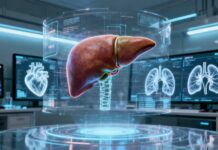It doesn’t come as a surprise that medical imaging is going through a revolutionary transformation and is driven by technology advancement, which enhance the MRI, X-ray technology, and CT. These innovations are indeed enhancing the diagnostic accuracy, decreasing the scan times, and also prioritising the safety of patient. There are emerging trends in imaging which are not only making the process more effective and efficient, but they Are also leading to high quality diagnostics, which are more accessible across the world. As the healthcare providers as well as researches continue Pushing the boundaries when it comes to medical imaging, the future indeed holds quite exciting possibilities that are going to indeed define how diseases get detected and also treated.
Speed and precision advancing MRI
Magnetic resonance imaging – MRI has for long been a cornerstone when it comes to diagnostic imaging, especially in assessing neurological, muscuskeletal, and also cardiovascular conditions. One of the most prominent advancements within MRI technology happens to be the development of ultrafast imaging techniques. There is traditional MRI scan, which can take anywhere Between 15 to 60 minutes, however, the AI-assisted MRI sequences are now decreasing the duration by almost 50%, and at the same time maintaining very High quality of images.
One more breakthrough happens to be the introduction of low-field MRI systems, which go on to provide very high-quality images and at the same time use lower magnetic fields. This kind of innovation is specifically very beneficial for patients having implanted medical devices like pacemakers, which are typically affected due to high-strength MRI magnets. Moreover, portable MRI scanners are also emerging as a game changer, enabling diagnostic imaging within rural, battlefield, and emergency settings where access when it comes to traditional MRI machines happens to be limited.
The very complete CT innovations
Completed tomography – CT scans are also becoming very advanced with new technologies going ahead and offering very high-resolution images, decreased exposure to radiation, and also enhanced differentiation in tissue. One of the most important investments within this field happens to be photon counting city technology. Unlike the conventional CT scanners, which only measure the energy and broad ranges, photon-counting detectors go ahead and capture individual x-ray photos, which lead to crisper images, lower radiation doses, and even more precise diagnoses.
One more transformative development happens to be the spectral CT imaging, which goes on to enhance the capacity to distinguish between various tissue types. This kind of approach is especially very beneficial in the case of early cancer detection by helping the doctors to differentiate between the benign as well as malignant growth in a more accurate way. Besides this, AI-enhanced image reconstruction is also improving the efficiency of CT scans, decreasing the noise and artifacts that can actually obscure certain significant details in diagnostics.
The next-gen X-ray tech
It happens to be one of the oldest forms when it comes to medical imaging. X-ray technology continues to advance with digital as well as AI-driven enhancements. Digital radiography (DR) has gone on to largely replace the traditional film-based x-rays by delivering higher-quality images and even faster processing times. The next evolution within X-ray imaging happens to be dynamic digital radiography (DDR), which is a technique that goes on to capture a sequence of X-ray images in very fast succession, thereby helping the doctors to visualize motion, and that too in real time. This technique is particularly useful for evaluating lung function, swallowing disorders, and joint movement. One more cutting-edge development happens to be phase-contrast X-ray imaging, which elevates the capacity to pinpoint the soft tissue abnormalities. Unlike the traditional x-ray scans, which completely rely on tissue density differences, phase-contrast technology goes on to capture the subtle variations by way of gauging how x-rays interact with tissues, thereby resulting in image resolutions that are much superior and therefore even help with the early detection of diseases.
Strategies pertaining to radiation dose reduction
Reducing the radiation exposure happens to remain a top priority when it comes to medical imaging, specifically for patients who require scans on a very frequent basis. Modern technologies are making it very much possible to attain high-quality images by way of significantly lesser radiation doses. There are AI-powered image reconstruction techniques that enable the radiologists to obtain a very clear and detailed image even when using radiation exposure that is very, very minimal.
Apparently, there are many new-generation CT as well as X-ray machines that are equipped with automatic exposure control systems that alter the radiation level based upon the size and anatomy of the patient. This customized approach goes on to minimize the unnecessary radiation while at the same time making sure that the accuracy within diagnostics is maintained at the highest level. Moreover, hybrid imaging technologies such as PET/CT as well as PET/MRI blend multiple imaging modalities, thereby helping with more comprehensive assessment and, at the same time, lowering radiation doses as compared to the scans that are standalone.
The 3D and 4D imaging effect
It is well to be noted that the introduction when it comes to 3 dimensional (3D) imaging has already transformed the precision within the medical diagnostics arena, and now 4-dimensional (4D) imaging is also pushing boundaries even further. While 3D imaging happens to offer static representations when it comes to tissues as well as organs, 4D imaging adds the movement of elements with time. This is especially very beneficial in terms of evaluating tumor growth patterns, function of the heart, and also joint mechanics in real time.
3D printing based on imaging data is one more groundbreaking application that is actually revolutionizing surgical planning as well as medical education. By way of using higher-resolution scans, doctors can go ahead and create personalized anatomical models that are customized to individual patients. These models enable the surgeons to rehearse certain intricate procedures, thereby reducing the risks in surgery and also enhancing the outcomes in patients.
Broadening the accessibility by way of portable as well as point-of-care imaging
It is well to be noted that access when it comes to advanced imaging is no longer restricted to hospitals or imaging centers that are specialized. Portable imaging devices are making high-quality diagnostics even more accessible, specifically within emergency medicine, disaster response, and even rural healthcare. There are handheld ultrasound devices that have already made a prominent impact. And researchers are now coming up with compact MRI as well as X-ray systems that can get used within remote clinics, ambulances, and even military field hospitals.
Apart from this, wireless digital systems are also expanding the reach when it comes to diagnostic imaging. These systems enable quick image transmission, thereby helping with real-time consultations between various healthcare providers that are based across different locations. This kind of connectivity makes sure that patients receive diagnoses as well as treatment recommendations at a much faster pace, regardless of where they are based.
Precise and patient-centric approach – yes, that’s the future of imaging
The future of medical imaging happens to be focused on delivering much safer, faster, and more precise diagnostics. As AI, machine learning, as well as image processing technologies continue to grow, CT, MRI, and even x-ray scans are going to become even more powerful tools when it comes to early detection of diseases as well as customized treatments. Innovations like real-time 4D imaging, AI-powered diagnostic tools, and even ultrafast MRI are all set to redefine the spectrum of radiology, thereby making healthcare a much more patient-centric, efficient, and proactive segment. With such advancements, patients can actually anticipate enhanced diagnostic precision, scan times that are much shorter, and elevated levels of safety, thereby marking a new era when it comes to medical imaging, which indeed promises to reshape the healthcare future.














